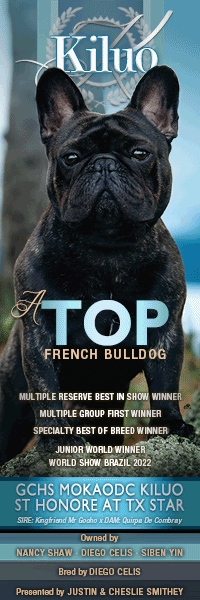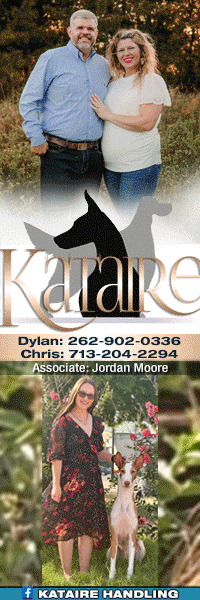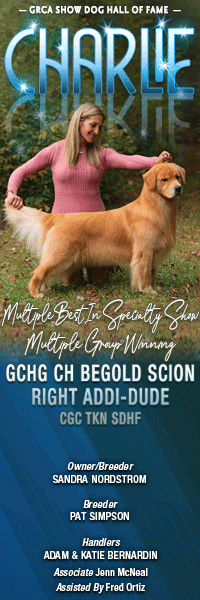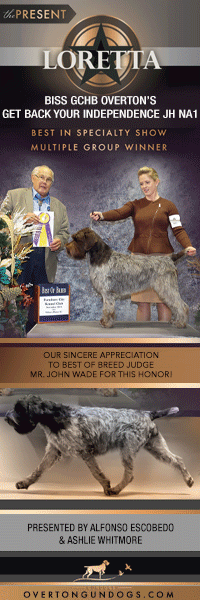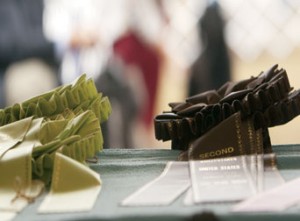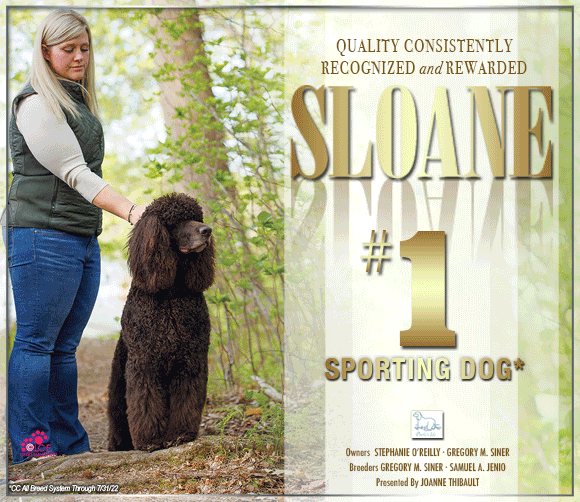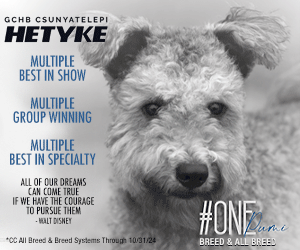From The CC Vault: Helpful Hints For Juniors
By William Given
Originally published: August 2012
1. SPEND TIME WATCHING PROFESSIONAL HANDLERS.
Professional handlers are not necessarily better handlers than breeder- or owner-handlers but because they show more dogs at many more shows they have become much more consistent in their presentation of client dogs in the ring. They make fewer handling errors. Watch with a critical eye when a professional handler is handling your breed in the ring, you will learn something almost every time.
2. SPEND TIME WATCHING OLDER AND MORE SUCCESSFUL JUNIORS.
It can be very competitive in the juniors’ ring. The older and more experienced juniors generally win more often because they are doing something just a little bit better or are making less noticeable handling errors. Be cautious here, do not change the way you handle because your peers in the juniors’ ring are doing something new or different with their dog. It may not at all be appropriate for your breed. It can be dangerous as learned bad habits can be hard to break.
3. SPEND MORE TIME AT YOUR BREED RING.
Although you will learn things by watching professional handlers and more experienced juniors, you stand to learn a great deal more by watching the exhibitors in your breed ring. Handling errors will be made in the breed ring and you will notice them. You will find yourself making a conscious effort not to make the same mistakes. More importantly, you will watch other exhibitors perfectly demonstrating proper breed presentation. Emulate them.
4. FIND YOURSELF A BREED MENTOR.
Breeder-Owner-Handlers have a great deal of experience and knowledge often acquired over many, many years. Most would be very happy to share all they have learned; all you have to do is ask. They can teach you a lot about proper grooming and breed presentation. You could also find your mentor to be a lifelong friend, a source of inspiration and one of your most steadfast supporters.
5. IF IT ISN’T BROKE, DON’T FIX IT.
Over-handling is quite probably the most common error made in the juniors’ ring. Too many juniors seem to believe that if they are not fidgeting with the front end, fixing the back end, or waving the bait in front of their dog’s face that they are not handling. The message that it sends the judge is that the dog was not set up properly in the first place or that the dog was not properly prepared for the dog show. A good handler works quickly with a minimum of effort (economy of motion) to draw the judge’s attention to the dog, not themselves.
6. TRUST THE JUDGE’S DECISION.
Not every person judging Junior Showmanship should be doing so. Most really do enjoy judging Junior Showmanship and they know what judging Junior Showmanship is all about. If you do not win your class or even earn a ribbon it does not mean you did a bad job. It simply means that the judge saw something in the other competitors that caused him to make the placements he did. Tomorrow is literally a different day and a different show. The results will very likely be different. So, if your parent, grandparent or best friend tells you, “The judge didn’t have a clue about what he was doing.” Please understand that they are trying to make you feel better but they are sending you the wrong message about good sportsmanship.
7. PASSION AND KNOWLEDGE WILL PREVAIL.
If you are showing a breed of dog known for being stubborn, a Basset Hound or Bulldog for example, or a breed of dog thought to be a bit clumsy, say a Saint Bernard or Newfoundland then you are to be commended. I am sure you have already noticed that many of your competitors in the juniors’ ring were quick to trade in their first dog for an easier breed, a flashy breed of dog known to virtually show themselves. It was because they did not have a love of the breed nor a sound knowledge of showing the breed. Show the breed which is your passion and even more importantly, the breed you really know. Practice with your dog until you are as good as any adult handler in your breed and success in the juniors’ ring will follow.
8. DO NOT GIVE UP ON YOUR DOG.
Your dog will not be at top of his game every show, the same way you will not be. It is a mathematical improbability. Be prepared for this and try to be understanding. He may not feel well. He may be tired, especially if the weather is hot and the ring is outside. He may be over-excited. You and your dog are a team. Stay calm and continue to work him patiently. He may come around, he may not. Please do not give up on your dog in the ring.
9. IF YOU ARE NOT HAVING FUN, WHAT’S THE POINT?
The good memories you have of competing in Junior Showmanship will far outnumber the bad. Ten years from now, twenty years from now, you won’t even remember the losses. It is the lessons you will learn along the way that will make you the handler and the adult you are destined to become. So, when you have had a bad day in the ring, but you did your best and your best wasn’t good enough for a blue ribbon, remember what it is all about…having a good time with your dog.
10. GO BACK TO THE BREED RING.
If you have been showing in Junior Showmanship any amount of time, you have to admit that you have lost more times than you have won. Dog show judging is very subjective. Junior Showmanship judging is even more subjective because it is the junior’s handling ability, not the quality of the dog that is being evaluated. A 10 year-old or even a 16 year-old young person has experienced few things in life to prepare them for dealing with this pressure. If you find yourself becoming discouraged, disheartened and beginning to lose confidence in your ability – go back to your breed ring. Watch, show and learn. It is in the breed ring where you will learn how other handlers, the professionals, breeders and owners alike, present their dogs. You will gain invaluable experience in evaluating the strengths and weaknesses of the dogs in the ring. It is in the breed ring that you will learn to minimize your dog’s faults and accentuate his virtues. A good juniors’ judge will notice and appreciate your efforts.
Short URL: https://caninechronicle.com/?p=249150
Comments are closed


